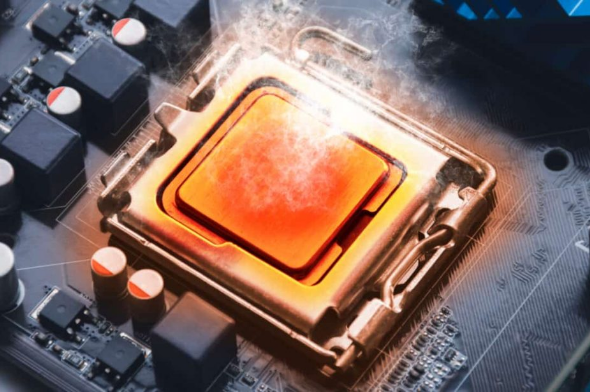Connection to DriversCloud Create a DriversCloud.com account Reset your DriversCloud.com password Account migration
New 115°C options in motherboard BIOSes
Between extreme overclocking and Raptor Lake Refresh temperature rise
First mentioned on an MSI motherboard - the Z790 ACE MAX - the new feature actually concerns other motherboards from the Taiwanese manufacturer, as well as products designed by other manufacturers such as ASUS or Gigabyte. Whatever the board, whatever the company involved, the principle remains the same. In fact, an option has been added to the BIOS of these motherboards, so that processors enter "protection mode" less quickly. This mode was designed by Intel for its chips, so that if the temperature reaches 100°C - or 107°C in the worst case - the processor significantly reduces its operating frequency.
Naturally, such a processor is then much less powerful, but the objective lies elsewhere: as its name suggests, the "protection mode" prevents the processor from overheating, as it runs at a lower frequency and therefore heats up much less. This is what we call throttling, and it avoids overheating problems, for example, when the processor fan fails or the watercooling system no longer functions properly. While the idea is to protect the chip, this system can also be a nuisance for some users, particularly overclockers.
Overclockers can push their processors for very short periods to temperatures in excess of 100°C and 107°C. The problem is that it is then impossible for them to reach the targeted records, as the processor goes into "protection mode". This is where the new " CPU fast throttle threshold " option comes into play: at MSI, this option simply raises this limit to 115°C. Of course, you need to know what you're doing, as the processor is subjected to more stress at this temperature.
Officially, this option has been introduced to help overclockers. This is undoubtedly true, but let's not forget that Intel Alder Lake or Raptor Lake processors did not push for the introduction of this feature. It was only with the release of Raptor Lake Refresh that MSI, ASUS or Gigabyte integrated this new feature. Does this mean that the new generation of Intel processors heats up more than their predecessors? All the tests seem to point to this.






